Today's guest blogger is Judith Monteferrante - a wonderful photographer who I met at SVA in NYC. Judith also participated in one of my Croton Creative workshops, which are great fun.
Judith's topic: Using Motion Creatively
Take it away Judith!
• • •
Find a personal project to inspire you to explore the environment around you and to create - not just take - images.
The beauty of digital is reinforced daily by the ability to quickly see what you have shot on the LCD, review the histogram and then adjust your exposure settings. Unfortunately the glare of a bright sunny day or the double jeopardy of shooting near sand and salt water may make this task difficult.
The beauty of digital is reinforced daily by the ability to quickly see what you have shot on the LCD, review the histogram and then adjust your exposure settings. Unfortunately the glare of a bright sunny day or the double jeopardy of shooting near sand and salt water may make this task difficult.
Also the size of the LCD display may make it difficult to assess motion critically, especially without your reading glasses. A HoodLoupe viewer can help in the bright sun.
About the HoodLoupe:
An alternative approach allows you to shoot and then review your images after the fact in LR or Bridge- planning the next adventure with new adjusted camera settings.
This review also allows you to decide on the best time of the day to shoot as well as the best conditions, such as wind, tide, etc. Remember, the key is to slow down, explore and learn.
This post-review is easy to do in Adobe Lightroom 3, my preferred method. In the Library module, go to View or just use the backslash keystroke \ to bring up the View Filter Bar. Then under the No Filter popup menu, choose the custom filter of Exposure Info. You will get 4 columns: focal length, ISO speed, aperture and Shutter Speed. By reviewing this info you can see images shot at these different settings and choose the best combination for your second attempt at your project.
About Lightroom:
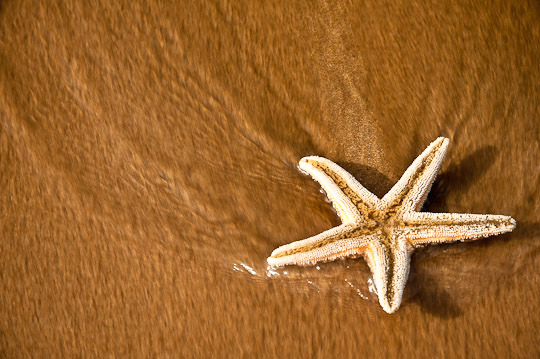 |
| 1/60 second at f/20, ISO 800 |
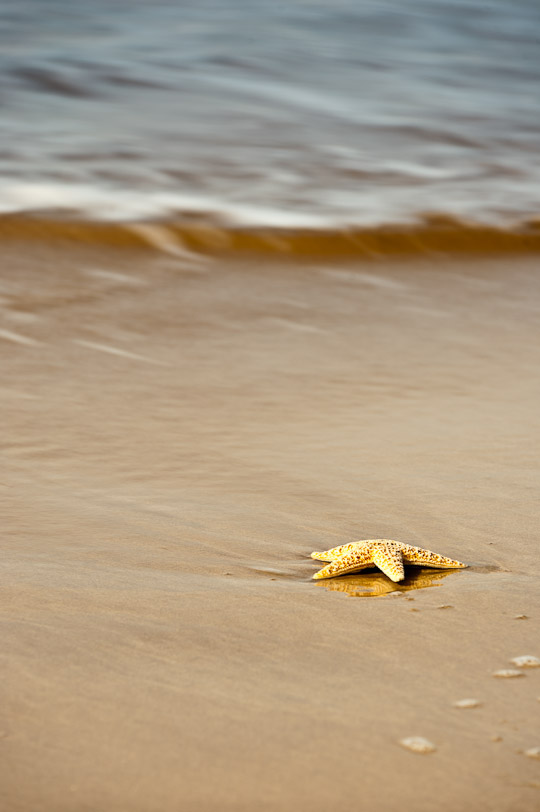 |
| 1/8th second at F/7.1, ISO 100 |
From my first adventure, I noted that the f-stops of f/11 to f/13 at ISO 100 was best shooting starfish and shells in the surf, but my shutter speeds (slow SS achieved by using a Variable Neutral Density Filter by Singh Ray) were far too slow. Day 2 however left me with the best at 1/30 or 1/60th, although too much foam in the water for my liking. Trial and Error is how we learn.
About Singh Ray ND Filters:
My further exploration of motion in water took me to the aquarium. Shooting in a dark setting through thick plexi glass with moving fish was another type of challenge. The light keeps changing, along with degree of motion and direction of the fish. I had to play a tango with my camera settings constantly making adjustments. Day one found me using a 50 mm prime lens (I try to simply my creative days by using one lens if possible). Getting clear close-ups of the fish was difficult indeed. I found it best to just go with the motion and shoot at slow shutter speeds (small aperture - high f stop and low ISO’s) to achieve some interesting effects.
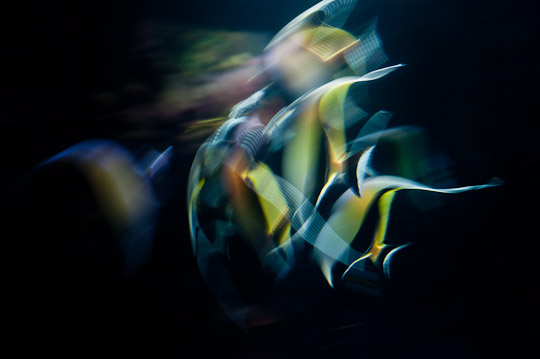 |
| 1/10th second at F/5, ISO 800 |
Day 2 with my 105 VR stabilized macro, close ups were easier. White balance on the other hand was another challenge no matter what WB settings I chose in camera. I later found out from the staff, that the light was always different and mixed for each tank depending on the coral reef and depth of the ocean they were attempting to replicate. I would have to shoot a white or grey card with each new tank while in minimal light.
However, I still preferred the images using slow shutter speeds and the original color effects to create artistic and vibrant abstracts outside of my usual comfort zone. Get wild and have fun creating with available motion and available light (any light that is available!).
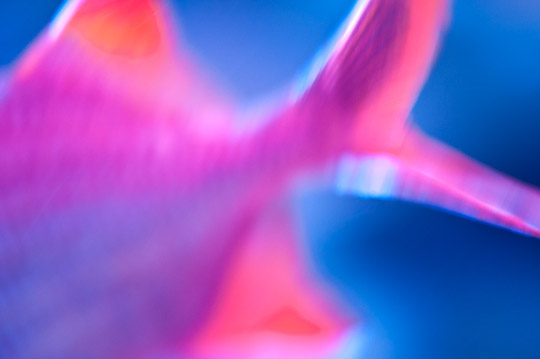 |
| 1/15th second at F/3.8, ISO 2200 |
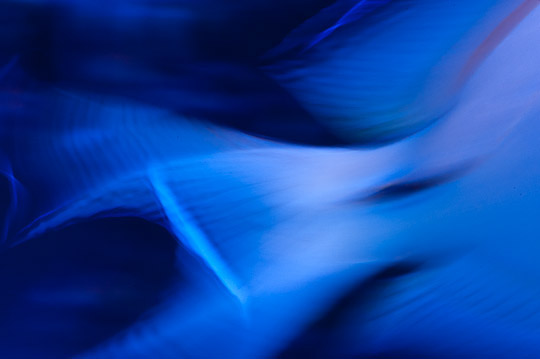 |
| 1/5th second at F/25, ISO 3200 |
For more info on my work, see below. And... that you, Rick, for asking me to be a guest blogger!
judith@judithmphotography.com
www.judithmphotography.com
www.swansongart.com (portrait work only)
Facebook: facebook.com/JudithMPhotography
Twitter: @drjmonte
Flickr: flickr.com/photos/judithmonteferrante/
LinkedIn: www.linkedin.com/in/jmonteferrantephotography

